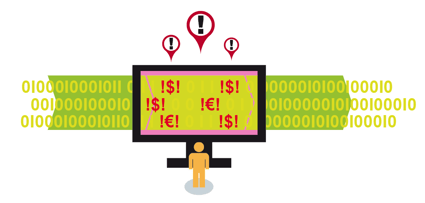What's So Modern About Modern Manufacturing?
Brian Hoey - February 20, 2018

.png?width=470&name=advanced%20analytics%20as%20a%20cost%20saving%20tool%20(1).png) If you had walked onto a factory floor during the second or third industrial revolution, it would have been immediately obvious what was so modern about what you were witnessing. You would have seen raw parts being turned into complex products on a moving assembly line, or newly automated processes making use of modern industrial machinery and early computer networks. In the world of Industry 4.0, the so-called “fourth industrial revolution,” the differences in appearance might be more subtle. You might still see a mix of manual labor and automated, computerized systems carrying out various production tasks, while many of important innovation brought about by Industry 4.0 might remain invisible to you. You might even be prompted to ask, “what’s so modern about modern manufacturing?”
If you had walked onto a factory floor during the second or third industrial revolution, it would have been immediately obvious what was so modern about what you were witnessing. You would have seen raw parts being turned into complex products on a moving assembly line, or newly automated processes making use of modern industrial machinery and early computer networks. In the world of Industry 4.0, the so-called “fourth industrial revolution,” the differences in appearance might be more subtle. You might still see a mix of manual labor and automated, computerized systems carrying out various production tasks, while many of important innovation brought about by Industry 4.0 might remain invisible to you. You might even be prompted to ask, “what’s so modern about modern manufacturing?”
Digitization
Rest assured, reports of the fourth industrial revolution have not been greatly exaggerated. Rather, they describe an emerging paradigm that radically alters the way that manufacturing businesses operate, beginning with the rise of supply chain digitization. Digitization means different things to different companies, but in essence it refers to the integration of digital processes and data into supply chain operations. This can take a number of forms:
- Internet of things (IoT) sensors on industrial equipment that predict the need for maintenance downtime
- Real-time traffic information to help plan around transport disruptions
- Automated inventory tracking and management
These are just a few examples. Each of these facets of digitization makes mission critical data more widely available and promotes the use of efficiency-bolstering cyber-physical systems. Earlier leaps forward in automation have focused on production processes themselves, but modern manufacturing increasingly relies on the automation of non-physical business functions like transport routing and equipment monitoring. Though innovations like these might not immediately strike an outside observer, digitization can represent a huge value added proposition by bolstering end-to-end (E2E) visibility throughout the supply stream and breaking down functional siloes within an organization. The result is a more responsive, agile, and adaptable supply chain.
Postmodern ERP
Perhaps ironically, modern manufacturing and modern ERP don’t exactly go hand in hand. While earlier approaches to resource management were designed around shoehorning all business functions into one umbrella IT solution, Industry 4.0 demands a more flexible approach that can integrate multiple technologies into a cohesive, interoperable whole, i.e. a Postmodern ERP approach. Just as digitization helps to increase visibility across the modern value chain, Postmodern ERP helps to increase transparency both within and without organizations by ensuring more seamless data integration and accessibility.
Also like digitization, Postmodern ERP doesn’t look like much from the outside, but it represents a categorical shift in workflows across multiple industries. With a more agile IT infrastructure connecting disparate teams as well as multiple vendors and suppliers, manufacturers can leverage their operational improvements into increasingly lean supply chain management. When siloes are removed and relevant data is made available to all who need it, organizations can eliminate redundancies not just in the supply stream, but in strategic, operational, and tactical levels of planning. Planners can work together to integrate long-, mid-, and short-term goals without working at cross-purposes and creating wasteful or inefficient processes.
S&OE
Speaking of operational planning: one of the most important aspects of modern manufacturing is the emergence of sales & operations execution (S&OE), which is a new level of organizational planning that seeks to bridge the gap between S&OP and day-to-day production processes. Now, at this point you may be asking, “what’s so modern about an extra layer of logistics?” And though you’d be right to wonder about the importance of such an innocuous-seeming process, S&OE actually represents the apex of multiple Industry 4.0 principles.
Essentially, S&OE tracks up-to-the-minute information about supply streams, changes in demand, and capacity plans to make small daily or weekly adjustments in planning and logistics. By checking real-time changes in demand against the expectations of higher-level planners, S&OE can drive dynamic, agile decisions about transport, inventory management, and other critical business functions to maintain efficiency in the face of potential disruptions. This functionality can have tremendous added value for manufacturers, but it’s only made possible by the advances in transparency, visibility, and flexibility that come with increased digitization and Postmodern ERP. Without these basic pillars of an Industry 4.0 supply chain already in place, real-time information would be difficult to integrate, and the value stream would remain inflexible and susceptible to risk. In this way, S&OE is one of the most significant examples of the synergistic workflows that put the “modern” in modern manufacturing.
LATEST POSTS
- Understand Circular Economy in The Manufacturing Industry
- How Can Industry 4.0 IT Integration Be Achieved Smoothly?
- The Significance of Order Sequencing in Discrete Manufacturing
- How to improve your Supply Chain Management: The Power of Control Towers
- Optimizing Human Resource Scheduling in Manufacturing: A Technological Approach



